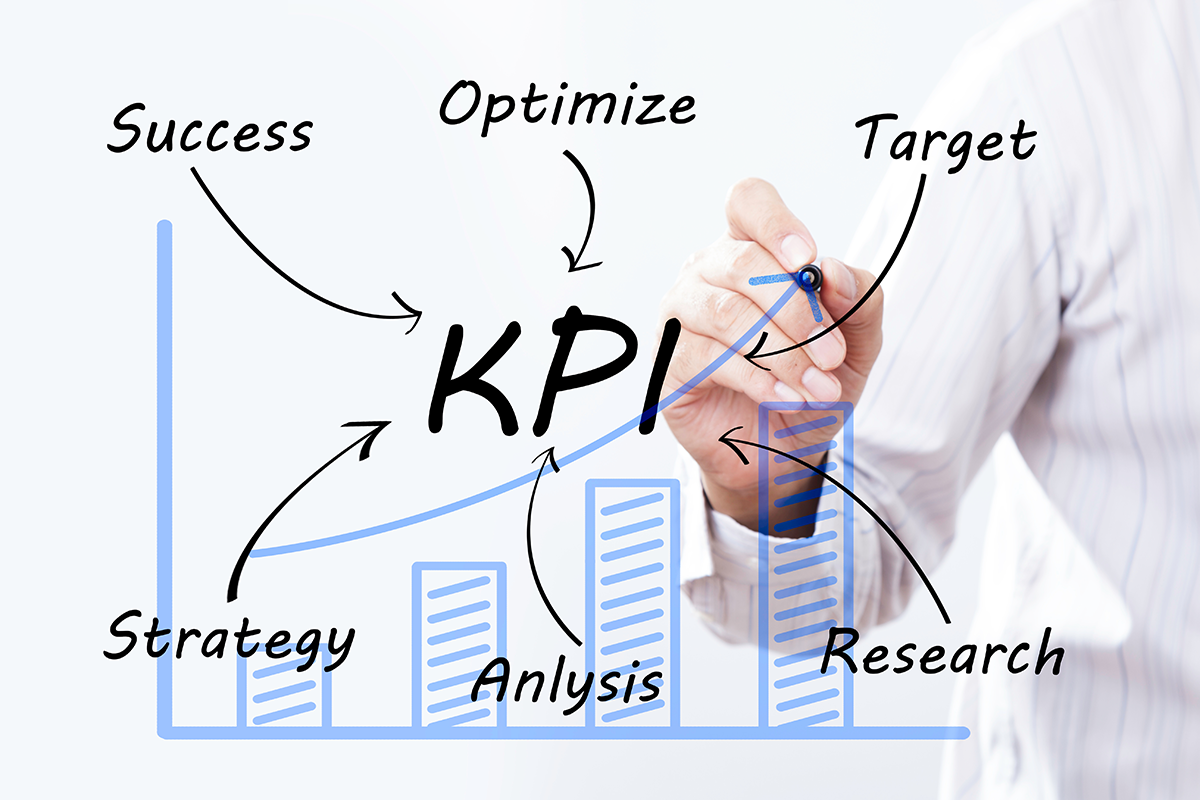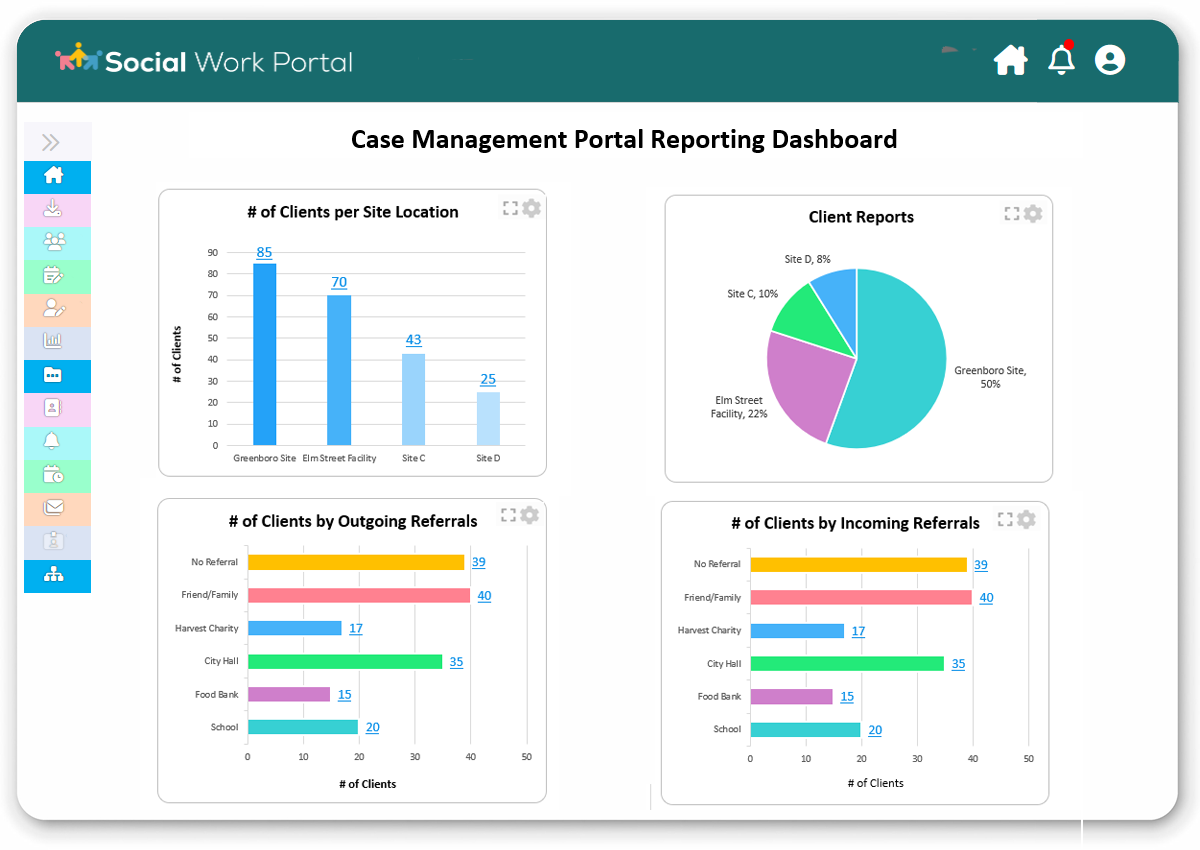How to Leverage Your KPIs: Step-by-Step Guide to Nonprofit Metrics
Reporting metrics and KPIs are a critical part of any nonprofit organization’s data flow. Key performance indicators for nonprofit organizations help leaders make informed decisions, drive service optimization, and help satisfy the requirements of grants and funders.

KPIs for nonprofits are essential tools that help track progress, measure success, and guide strategic planning. This practical guide will explore what KPIs are, why they are important, and how to effectively use them to turn data into actionable insights for your nonprofit organization.
Watch a summary below:
Story Highlights
|
Understanding Nonprofit KPIs
What Are KPIs?
Key Performance Indicators (KPIs) are specific, measurable metrics used to evaluate the performance and effectiveness of an organization in achieving its goals. For nonprofits, KPIs provide a quantitative basis for making decisions and assessing the impact of various initiatives.
They help answer critical questions like:
- Are we meeting our mission goals?
- How effectively are we utilizing our resources?
- What areas need improvement or more focus?
Why Are Key Performance Indicators for Non-profit Organizations Important?
- Measuring Impact: KPIs allow nonprofits to quantify their impact and demonstrate the effectiveness of their programs. This is crucial for transparency and accountability to stakeholders, including donors, beneficiaries, and regulatory bodies.
- Guiding Decision-Making: With clear nonprofit metrics, leaders can make informed decisions about where to allocate resources, which programs to expand, and which areas need improvement.
- Enhancing Efficiency: By tracking operational KPIs, nonprofits can identify inefficiencies and optimize their processes, ensuring that resources are used as effectively as possible.
- Attracting Funding: Demonstrating success through well-defined nonprofit KPI examples can help attract and retain donors, as it provides tangible evidence of the organization’s impact and effectiveness.
Key Performance Indicators for Nonprofit Organizations
Choosing the right KPIs for your nonprofit depends on your specific mission, goals, and operational structure. However, there are several common metrics for nonprofits that can serve as a foundation for most organizations.
Program-Specific Not-for-Profit KPIs
- Beneficiary Reach: Measures the number of individuals or communities directly impacted by your programs. This KPI helps assess the scale and reach of your initiatives.
- Program Participation Rate: Tracks the percentage of eligible individuals who participate in your programs. A higher participation rate often indicates that the program is effectively addressing the needs of the target population.
- Outcome Metrics: Specific to each program, these nonprofit metrics evaluate the tangible results of your efforts. For example, a literacy program might track the improvement in reading levels among participants.
Financial Not-for-Profit KPIs
- Fundraising Efficiency: Calculates the ratio of funds raised to the costs incurred in fundraising activities. This KPI for non-profit organizations helps evaluate the effectiveness of your fundraising strategies.
- Donor Retention Rate: Measures the percentage of donors who continue to support your organization over time. High donor retention indicates strong relationships and satisfaction with your work.
- Cost per Beneficiary: Calculates the total program costs divided by the number of beneficiaries. This nonprofit metric helps assess the efficiency of your resource allocation.
Operational Not-for-Profit KPIs
- Volunteer Engagement: Tracks the number of active volunteers and their hours of service. High volunteer engagement often correlates with strong community support and operational capacity.
- Staff Turnover Rate: Measures the rate at which employees leave the organization. A low turnover rate suggests a positive work environment and effective human resource management.
- Grant Success Rate: The percentage of grant applications that result in funding. This KPI for non-profit organizations can help assess the effectiveness of your grant writing and relationship-building efforts.
Please let us know if you have any questions about key performance indicators examples for nonprofit organizations. We’ll be happy to help!
How to Effectively Use Nonprofit KPIs
1. Align KPIs with Your Mission and Goals
Your key performance indicators for non-profit organizations should be directly linked to your organization’s mission and strategic objectives. Start by clearly defining your goals and then identify the nonprofit metrics that will best measure progress towards those goals.
For example, if your mission is to reduce homelessness, relevant metrics for nonprofits might include the number of individuals housed, the duration of housing stability, and the reduction in street homelessness.
2. Make Nonprofit KPIs Specific and Measurable
KPIs for nonprofits should be specific, measurable, achievable, relevant, and time-bound (SMART). Vague or overly broad metrics can lead to confusion and make it difficult to assess performance. Instead of setting a general goal like “improve community health,” specify metrics such as “increase the number of community health screenings by 20% in the next year.”
3. Collect and Analyze Data Regularly
Consistent data collection and analysis are crucial for tracking progress and making informed decisions. Establish a regular schedule for collecting data on your nonprofit KPIs, whether it’s monthly, quarterly, or annually. Use data management tools and nonprofit reporting software to streamline this process and ensure accuracy.
4. Communicate Results to Stakeholders
Transparency is key in the nonprofit sector. Regularly communicate your nonprofit KPI examples to stakeholders, including donors, board members, staff, and the communities you serve. Use clear and concise nonprofit reports, dashboards, and visual aids to make the data accessible and understandable. Highlight successes and be honest about challenges and areas for improvement.
5. Use Nonprofit Metrics to Drive Continuous Improvement
Key performance indicators for nonprofit organizations are not just about measuring success; they are also tools for learning and growth. Regularly review your KPIs and use the insights gained to make data-driven decisions. Identify trends, uncover root causes of issues, and adjust your strategies as needed. Foster a culture of continuous improvement within your organization, where feedback and data are used to enhance performance and impact.
Case Study – Key Performance Indicators Examples for Nonprofit Organizations
To illustrate the practical application of nonprofit KPIs, let’s look at a hypothetical case study of “Nonprofit XYZ,” an organization dedicated to improving educational outcomes for underserved youth.
Mission and Goals
Nonprofit XYZ’s mission is to enhance educational opportunities for underprivileged students by providing tutoring, mentoring, and scholarship programs. Their strategic goals include:
- Increasing high school graduation rates among participants
- Improving college enrollment rates
- Enhancing academic performance in core subjects
Selected KPIs for Nonprofits
Based on their mission and goals, Nonprofit XYZ selects the following KPIs:
- High School Graduation Rate: The percentage of program participants who graduate from high school.
- College Enrollment Rate: The percentage of graduates who enroll in college.
- Academic Performance: Improvement in participants’ grades in core subjects (e.g., math, science, language arts).
- Program Reach: The number of students enrolled in their tutoring and mentoring programs.
- Donor Retention Rate: The percentage of donors who continue to support the organization annually.
Implementation and Results
Nonprofit XYZ implements a robust data collection system, including surveys, academic records, and donor databases. They analyze the data quarterly and produce detailed reports for their board and donors.
After one year, the results are as follows:
- High School Graduation Rate: 90% of participants graduated, up from 85% the previous year.
- College Enrollment Rate: 70% of graduates enrolled in college, exceeding their goal of 65%.
- Academic Performance: Participants showed an average improvement of one letter grade in math and science.
- Program Reach: The number of students enrolled in their programs increased by 15%.
- Donor Retention Rate: 80% of donors continued their support, up from 75%.
Nonprofit XYZ uses these insights to refine its programs further, focusing on expanding its tutoring services and enhancing college preparation workshops. They also share their success stories with donors, leading to increased funding and support.
Do you have any questions or feedback about a KPI for non-profit organizations? Please reach out and let us know.
Metrics for Nonprofits: Challenges and Considerations
Data Quality and Integrity
One of the biggest challenges in using key performance indicators for non-profit organizations is ensuring the accuracy and reliability of your data. Inaccurate or incomplete data can lead to misleading conclusions and poor decision-making. Invest in robust data collection and management systems and train your staff on data integrity best practices.
Balancing Quantitative and Qualitative Data
While KPIs are typically quantitative, qualitative data is also valuable in understanding the full impact of your programs. Incorporate qualitative feedback from beneficiaries, volunteers, and staff to provide context and depth to your KPI analysis.
Avoiding KPI Overload
It’s easy to get carried away with tracking too many metrics. Focus on a few critical KPIs for nonprofits that align with your strategic goals and provide the most valuable insights. Too many KPIs can dilute your focus and make it difficult to act on the data.
Adapting to Change
The nonprofit landscape is constantly evolving, and your KPIs should be flexible enough to adapt to changes in your environment, funding, and mission. Regularly review and update your nonprofit KPI examples to ensure they remain relevant and aligned with your goals.
Key Performance Indicators Examples for Nonprofit Organizations Conclusion
Nonprofit KPIs are powerful tools that can transform data into actionable insights, driving better decisions and greater impact. By selecting the right KPIs, regularly collecting and analyzing data, and using the insights gained to inform your strategies, you can enhance your nonprofit’s effectiveness and achieve your mission more efficiently.
Case Management Software with Built-in KPI Reporting
Save time creating your nonprofit KPIs by using the Case Management Hub. Our platform tracks your client data, automating both built-in and custom charts and reports.
Learn more & get your free trial.
FAQ: KPI for Non-profit Organization
Why are key performance indicators for non-profit organizations important?
Some of the reasons that metrics for nonprofits are important are that KPIs allow nonprofits to quantify their impact, demonstrate the effectiveness of their programs, make better decisions, identify inefficiencies to optimize, and attract funding.
What are three categories of not-for-profit KPIs?
Three main categories of key performance indicators for non-profit organizations are Program-Specific KPIs, Financial KPIs, and Operational KPIs.
What are some challenges faced when working with key performance indicators for nonprofit organizations?
Some challenges and considerations when working with KPIs for nonprofits are: Data Quality and Integrity, Balancing Quantitative and Qualitative Data, Avoiding KPI Overload, and Adapting to Change.
Note: Content on this website (socialworkportal.com) is copyrighted and protected under applicable copyright laws. Unauthorized reproduction, distribution, or use of any content from the website, without explicit written permission, is strictly prohibited. Read: Terms of Use.
Social Work Portal Disclaimer: Social Work Portal is not a social work agency and we do not refer social workers. This web site is provided for educational and informational purposes only and does not constitute providing medical advice or professional social and healthcare services. The information provided should not be used for diagnosing or treating a health problem or disease, and those seeking personal medical advice should consult with ... Read our full disclaimer here: Social Work Portal Disclaimer.

Image sources: Stock.adobe.com






